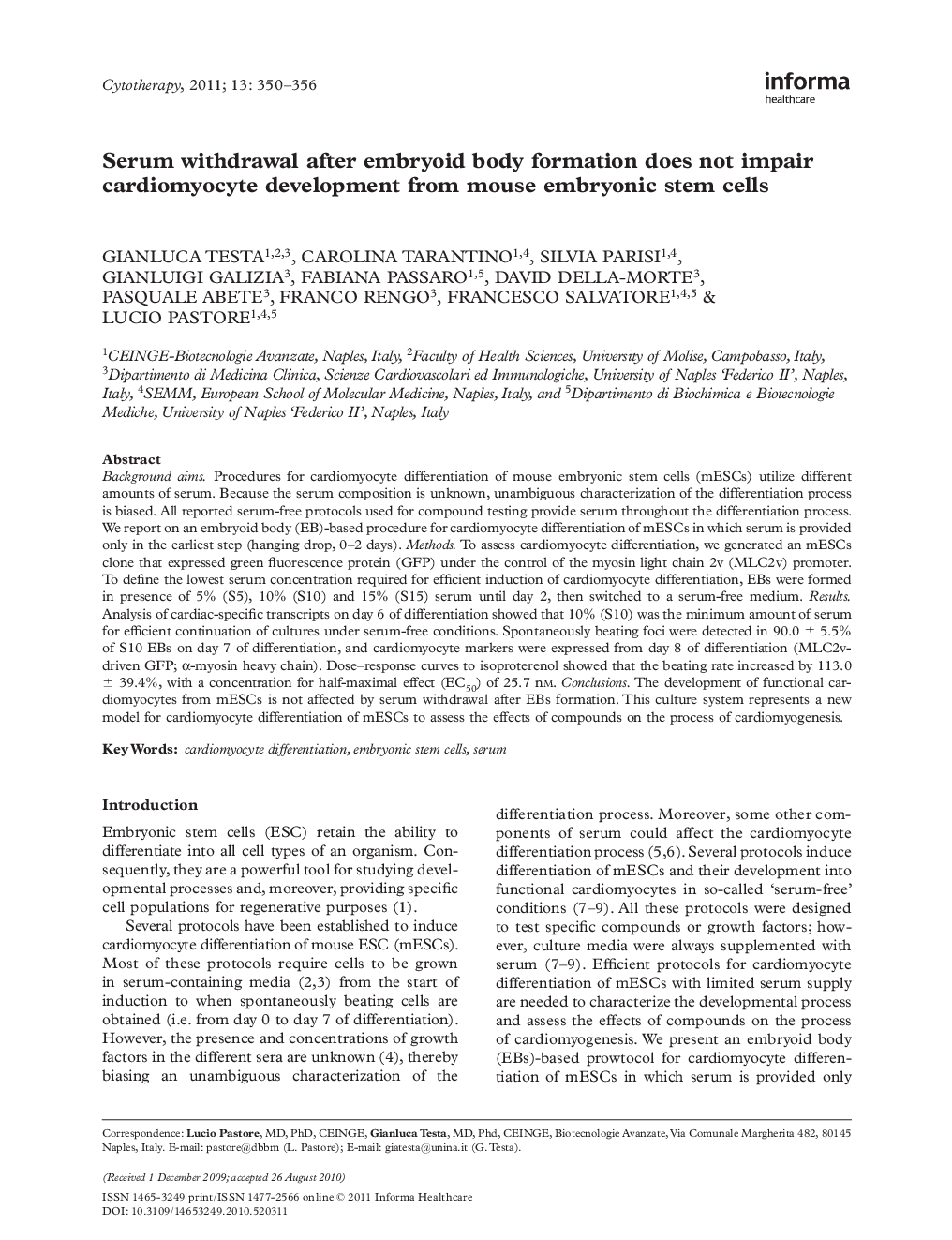| Article ID | Journal | Published Year | Pages | File Type |
|---|---|---|---|---|
| 2172062 | Cytotherapy | 2011 | 7 Pages |
Background aimsProcedures for cardiomyocyte differentiation of mouse embryonic stem cells (mESCs) utilize different amounts of serum. Because the serum composition is unknown, unambiguous characterization of the differentiation process is biased. All reported serum-free protocols used for compound testing provide serum throughout the differentiation process. We report on an embryoid body (EB)-based procedure for cardiomyocyte differentiation of mESCs in which serum is provided only in the earliest step (hanging drop, 0–2 days).MethodsTo assess cardiomyocyte differentiation, we generated an mESCs clone that expressed green fluorescence protein (GFP) under the control of the myosin light chain 2v (MLC2v) promoter. To define the lowest serum concentration required for efficient induction of cardiomyocyte differentiation, EBs were formed in presence of 5% (S5), 10% (S10) and 15% (S15) serum until day 2, then switched to a serum-free medium.ResultsAnalysis of cardiac-specific transcripts on day 6 of differentiation showed that 10% (S10) was the minimum amount of serum for efficient continuation of cultures under serum-free conditions. Spontaneously beating foci were detected in 90.0 ± 5.5% of S10 EBs on day 7 of differentiation, and cardiomyocyte markers were expressed from day 8 of differentiation (MLC2v-driven GFP; α-myosin heavy chain). Dose–response curves to isoproterenol showed that the beating rate increased by 113.0 ± 39.4%, with a concentration for half-maximal effect (EC50) of 25.7 nm.ConclusionsThe development of functional cardiomyocytes from mESCs is not affected by serum withdrawal after EBs formation. This culture system represents a new model for cardiomyocyte differentiation of mESCs to assess the effects of compounds on the process of cardiomyogenesis.
